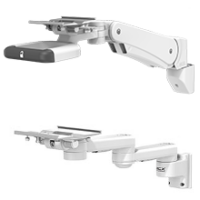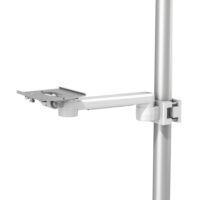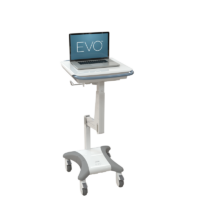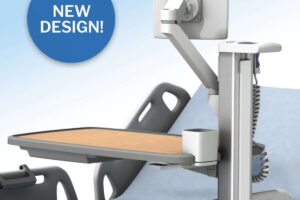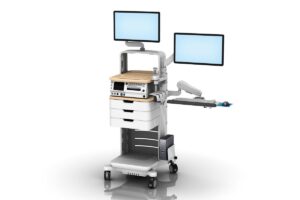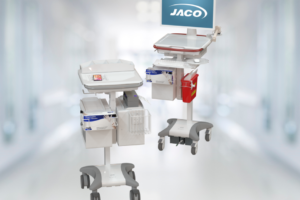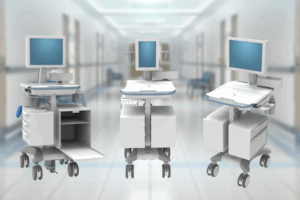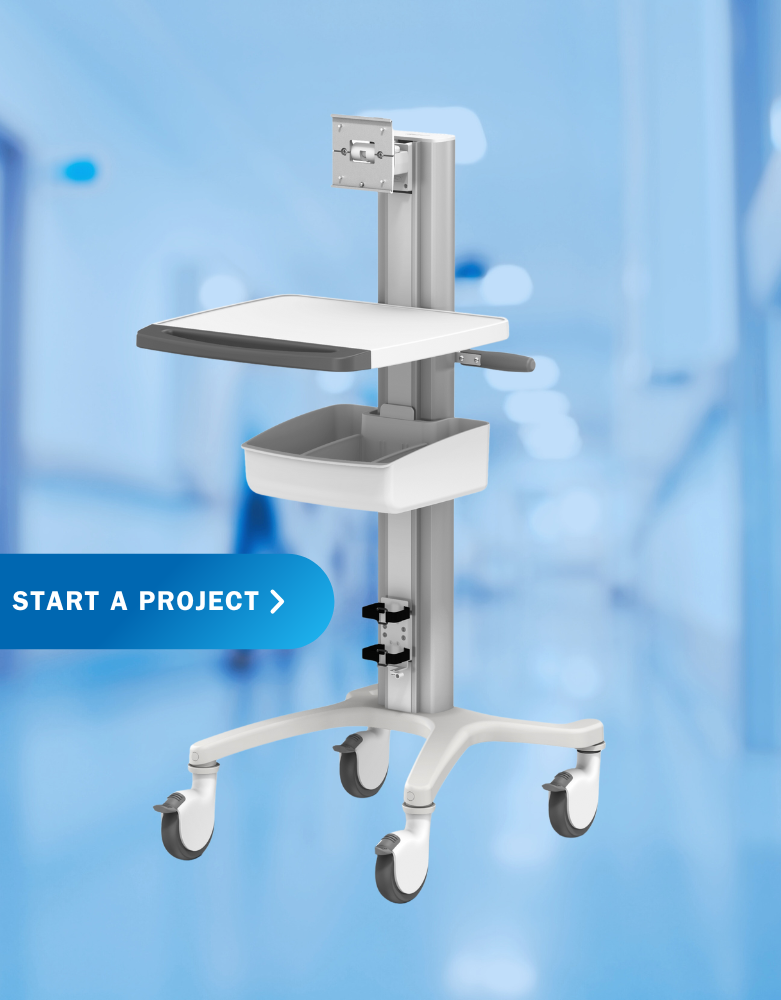
-
Solutions
Care Area Solutions
Standardize GCX mounting solutions throughout your healthcare facility.
IT and EMR Solutions
Mounting solutions for Information Technology and Electronic Medical Records equipment.
Mounting solutions based on your mounting location.
Medical Device Solutions
Mounting solutions designed specifically for your medical and patient monitoring devices.
-
Products
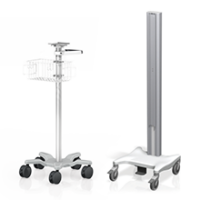
Carts and Roll Stands
Variable Height
Fixed Height
Accessories
- 10 x 25 mm Rails
- Barcode Scanner Mounts
- Baskets and Bins
- Cable Management
- Camera Mounts
- Channels
- CPU Mounts
- Data Capture Device Mounts
- Down Posts
- Drawers
- Gas Cylinder Mounts
- Gel Bottle Mount
- Handles
- Keyboard Trays and Plates
- Medical-Grade Power Strips
- Mountable Tablet Enclosures
- PolyQuip® Post and I.V. Bag Hanger Mounts
- Power Supply Mounts
- Probe Cup Mount
- Speaker Mount
- Tablet Integration
- Trays
- UPS Mounts
- USB Charging Modules
- VESA Adapter Plates
-
OEM Services
Mounting solutions for medical device OEM partners range from off-the-shelf to complete custom products.
Approach
Modalities
- Ventilation
- Ultrasound
- Patient Monitoring
- Telemedicine
- Surgical Navigation
- ECG Solutions
- Other Modalities
Our Expertise
-
Support
-
About GCX
Exploring a Higher Level of Patient Experience
By GCX Corporation on July 6, 2016 in Mobile Devices, Patient Engagement Table, Patient Experience, Tablets
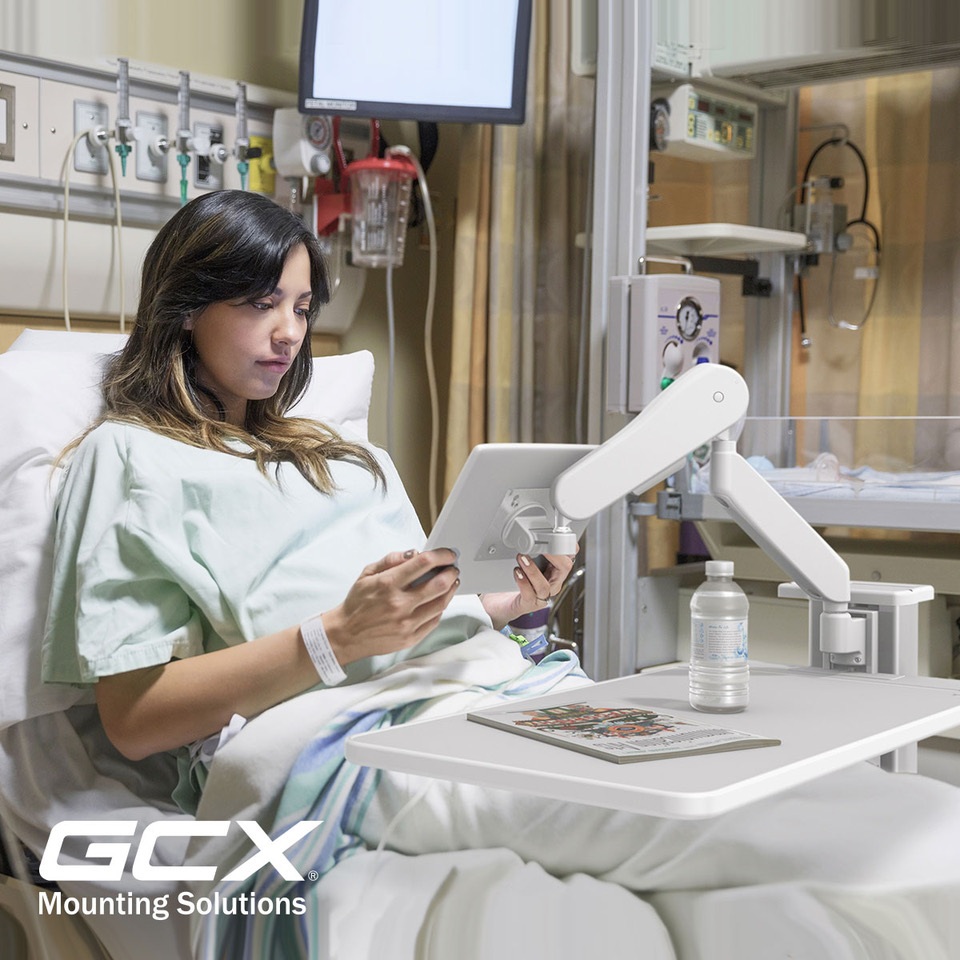
In a Richmond, Va., hospital’s ICU, tetraplegics unable to move by themselves are communicating and staying connected to the outside world by controlling an overhead laptop’s cursor using their eye instead of a mouse.
Elsewhere, a new mother is opening up a web portal on a tablet to watch her newborn via live video feed from the NICU. And San Francisco pediatric patients are finding their hospitalizations a little less scary and confusing, thanks to tablets loaded with education and entertainment apps that they can easily access from their beds.
Medical centers all over the country and abroad are exploring how mobile computers can help some of their more vulnerable patient populations stay informed, connected and engaged in their care plans.
For most organizations this is new territory. Safely and securely incorporating this technology into patient areas has its own significant learning curve.
Since last fall, GCX engineers and field experts have been a part of several important initiatives to put mobile devices into patients’ hands while they are in clinical settings. This is, of course, only a small component of an overall patient experience strategy, but it’s a significant one for a number of hospitals wanting to better inform, connect and thereby empower their patients.
These efforts raise a host of implementation questions:
- Does the hospital provide the hardware or follow a BYOD strategy?
- Which operating system is best: Windows? iOS? Android?
- How do we clear data from the tablet and start over when a new patient is admitted?
- How do we charge these devices in near-constant use?
- What kind of wireless capacity is needed, and can our network handle it?
- How do you position the tablet so a patient can use it comfortably and safely?
- How will patients react, and are there certain subsets of patients with different needs?
- What kind of help desk or organizational support do we need to have in place?
Innovation is about learning, and the best way to innovate in uncharted territory is to start simply. Whether you’re applying Lean Startup concepts in an entrepreneurial setting, or Agile project management methodologies in software development, some best practices are to: (1) define narrowly scoped development “sprints,” (2) create feedback loops to capture your learning and (3) start sooner rather than later!
For example, consider launching a Minimum Viable Product such as a bedside-mounted tablet that gives patients in one department access to their Epic MyChart, and perhaps their Facebook account or other web applications. Patients will quickly let you know what they like and don’t like, providing you the opportunity to refine and the confidence to scale up.
Amazing portals are available from companies like Oneview, Lincor, Sonifi and others that provide a much more integrated and higher quality experience for the patient. But there is no need to wait for a large, hospital-wide implementation to start improving your patients’ experiences and learning your own organization’s unique implementation needs. A pilot program is a great way to quickly learn what works and effectively shape a system for the long term.
Recent Blog Posts
- Patient Engagement July 15, 2025
- Understanding Patient Experience June 4, 2025
- Preventive Maintenance for Medical Devices April 15, 2025
- Hospital Asset Tracking Systems: Integration Maximizes Value March 27, 2025
- Bring IT December 13, 2023
Blog Categories
- Anesthesia
- Asset Tracking & Preventative Maintenance
- Case Studies
- Custom Solutions
- EMR Hardware
- Endoscopy
- Ergonomics
- Fetal Monitoring
- Headwalls
- HIMSS
- Medical Computer Carts
- Medical Devices
- Medical Mounting Solutions
- Mobile Devices
- On-Site Services
- Patient Engagement Table
- Patient Experience
- Tablets
- VHM-PL





















